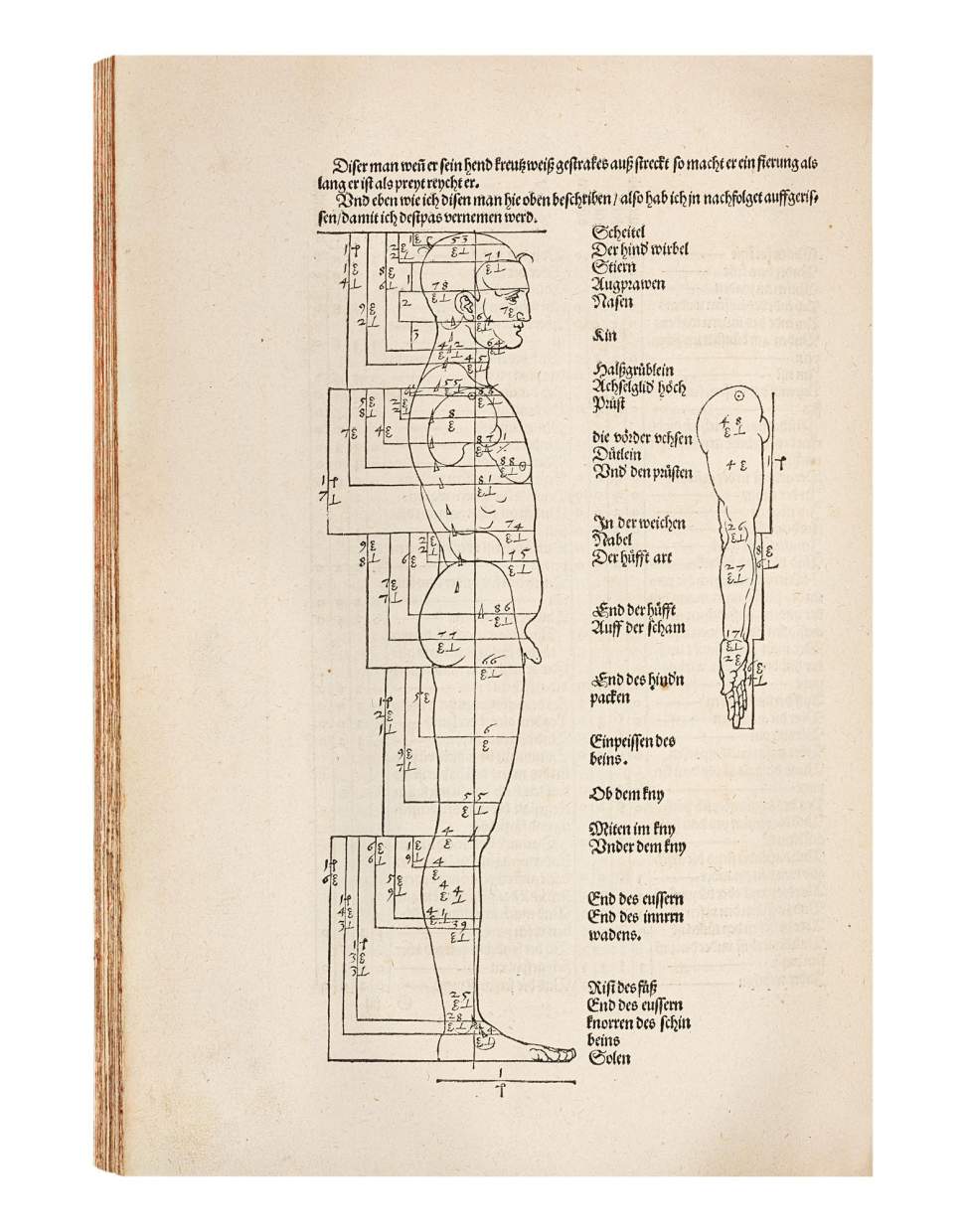A New Perspective: A trailblazing Sammelband of Dürer's Theoretical Works
Hieronymus Andreas and Dürer's Widow, 1527-1538
This edition is a fascinating Sammelband of Dürer’s three theoretical works on art – ground-breaking studies he composed toward the end of his life and which he also prepared for the press. These include his treatise on fortification, on measurement, and proportion. His three works are the cornerstone of what can be called ‘aesthetic dogma’ and were influential throughout the 19th century.
Price on request.
%3Cdiv%20class%3D%22title%22%3E%3Cem%3EA%20New%20Perspective%3A%20A%20trailblazing%20Sammelband%20of%20D%C3%BCrer%27s%20Theoretical%20Works%3C%2Fem%3E%2C%201527-1538%3C%2Fdiv%3E%0D%3Cdiv%20class%3D%22medium%22%3EPrinted%20book%20on%20paper.%3C%2Fdiv%3E%0D%3Cdiv%20class%3D%22dimensions%22%3E2%C2%B0.%20308%20x%20199%20mm.%2026%20ff.%2C%20with%20large%20woodcut%20coat-of-arms%20of%20Ferdinand%20I%20on%20title%2C%2020%20woodcuts%20in%20the%20text%20%2812%20double-page%20folding%20woodcuts%29.%20Bound%20in%20contemporary%20calf%20tooled%20and%20panelled%20in%20gilt%20and%20blind%2C%20upper%20cover%20stamped%20%E2%80%9CKunstBuch%20Albrecht%20D%C3%BCrers%20von%20N%C3%BCrnberg%201571%E2%80%9D%2C%20with%20brass%20markers.%20P3-4%20bound%20in%20at%20one%20edge%20in%20order%20to%20form%20a%20double-page%20fold-out%20plate%2C%20as%20is%20correct%3B%20Q3%20folded%2C%20with%20extra-wide%20woodcuts%20on%20either%20side%2C%20as%20is%20correct%3B%20two%20woodcut%20extensions%20tipped%20onto%20P5%20verso%20and%20P6%20recto.%20%E2%80%93%20A%20few%20incidental%20stains%2C%20stamp%20on%20verso%20of%20first%20title%20and%20verso%20of%20last%20leaf%3B%20minor%20repairs%20to%20joints%20and%20corners%3B%20in%20a%20book-box.%3C%2Fdiv%3E
Printed book on paper.
2°. 308 x 199 mm. 26 ff., with large woodcut coat-of-arms of Ferdinand I on title, 20 woodcuts in the text (12 double-page folding woodcuts). Bound in contemporary calf tooled and panelled in gilt and blind, upper cover stamped “KunstBuch Albrecht Dürers von Nürnberg 1571”, with brass markers. P3-4 bound in at one edge in order to form a double-page fold-out plate, as is correct; Q3 folded, with extra-wide woodcuts on either side, as is correct; two woodcut extensions tipped onto P5 verso and P6 recto. – A few incidental stains, stamp on verso of first title and verso of last leaf; minor repairs to joints and corners; in a book-box.
A unique Sammelband encompassing Dürer’s most important works which defined European understanding of proportion and perspective, and influenced artists for centuries
Overview
The first treatise on fortification, here in its second edition, was published in Nuremberg in 1527 following the urgent necessity to establish adequate defences against the Turkish invasion that threatened Christian Europe. The work illustrates the principle of fortresses and represents some of Dürer’s most important architectural works. Many of his designs were put into practice; the ground plan of Schaffhausen in Switzerland can be considered as a model for Dürer's ideas.
The second book in this Sammelband is the first complete edition of the Underweysungen der Messung (A Course in the Art of Measurement) which includes Dürer’s corrections and additions from his personal annotated copy, as well as several reworked illustrations and some woodcuts which appear for the first time. The aim of the Underweysung was to teach the principles of perspective and introduce practical geometry and its application to drawing and painting.
The third book in the Sammelband is the first Latin edition of books I-II of Von menschlicher Proportion (Of Human Proportions), in the influential translation by Camerarius. The science behind the proportions of the different parts of the human body represents one of the core issues of the theoretical reflexions of the Renaissance artist, along with the science of mathematical perspective. Dürer’s treatise was trailblazing, as it called the canonised idea of the ‘ideal’ human body – popular in Italy – into question, and opened the door for a more naturalistic approach to painting.






